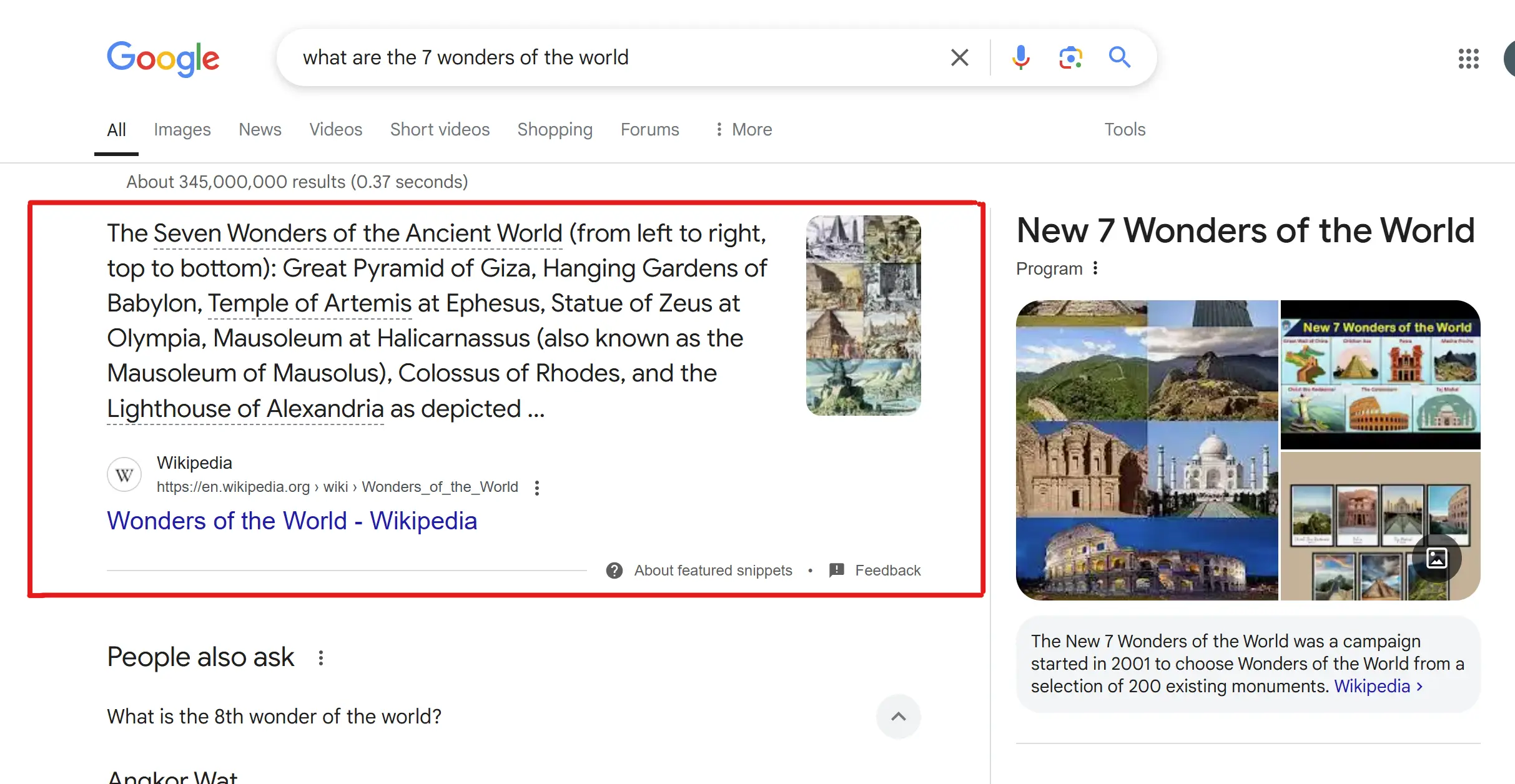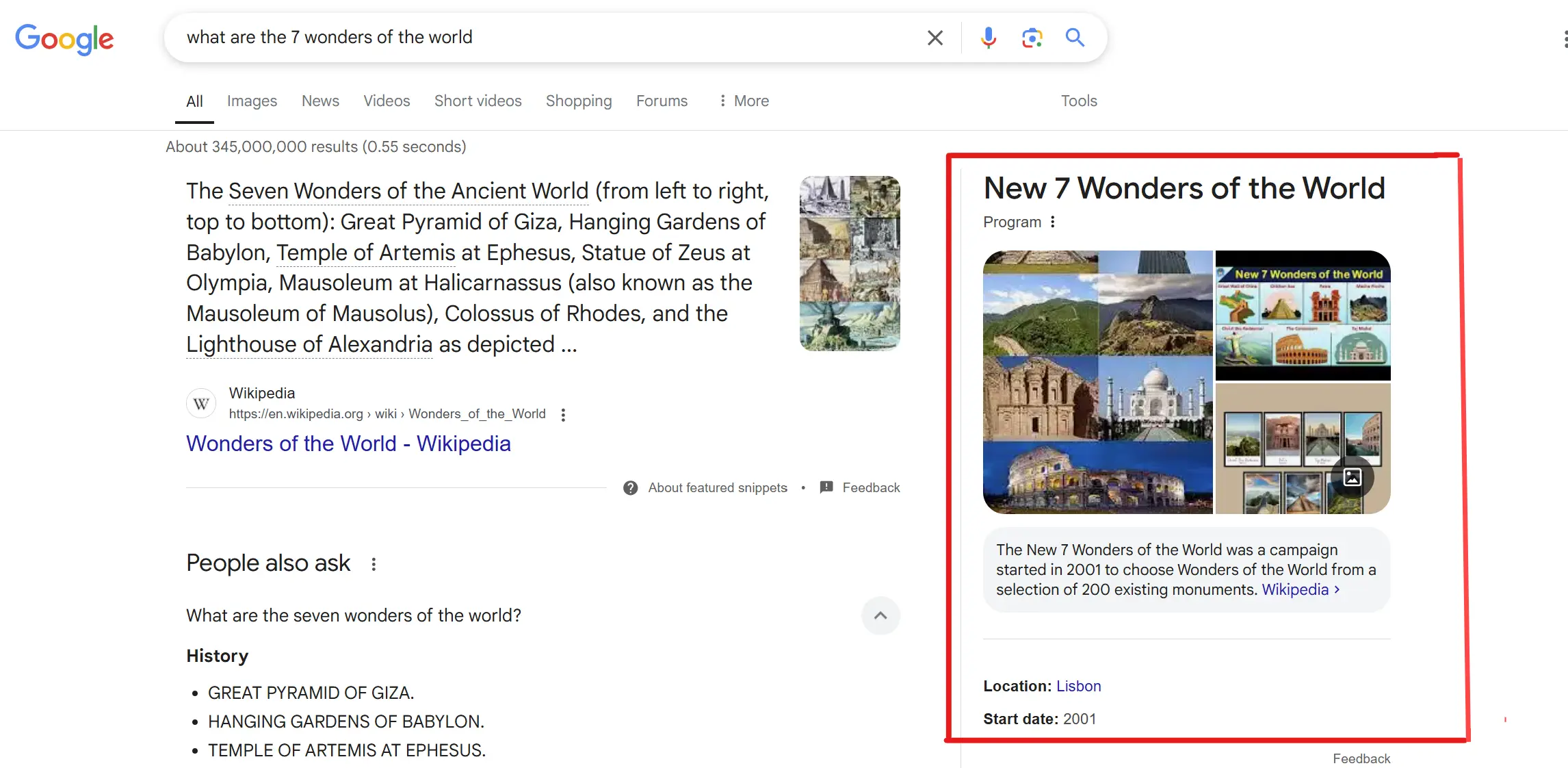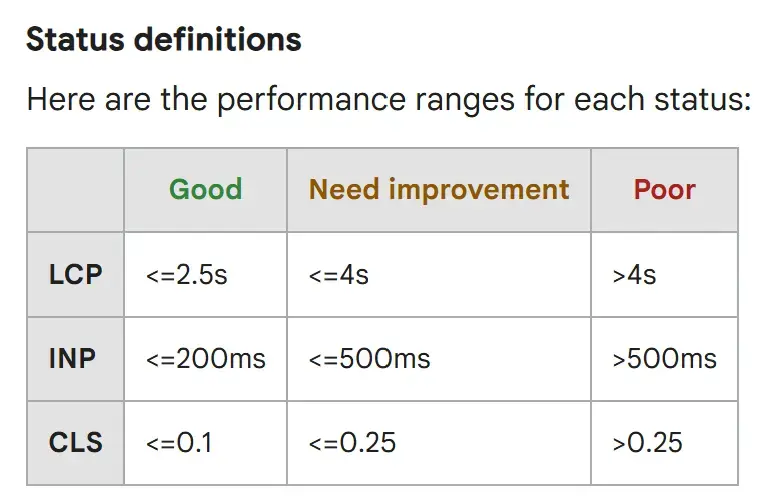Featured Snippets vs. Rich Snippets (AKA: Rich Results)
Instruction
Understanding featured snippets and rich snippets can make all the difference. Both enhance your search visibility, but they serve unique purposes. In this guide, we’ll break down the differences, benefits, and best practices for optimizing your website to appear in both featured and rich snippets.
What Are Featured Snippets?
Featured snippets are highlighted search results that appear at the top of Google's SERPs, often in a dedicated box. They provide direct answers to user queries, making it easy for searchers to find quick information without clicking through.

Types of Featured Snippets:
Paragraph Snippets: Short text responses to answer questions.
List Snippets: Bulleted or numbered lists for step-by-step instructions or rankings.
Table Snippets: Structured tables that display comparisons or data.
Video Snippets: Video previews with a short caption, often from YouTube.
How to Optimize for Featured Snippets:
Target question-based and long-tail keywords.
Structure content with clear headers (H2, H3) and bullet points.
Provide concise, direct answers.
Add tables or lists where appropriate.
Ensure content is authoritative and regularly updated.
What Are Rich Snippets?
Rich snippets are enhanced search results that display additional details like ratings, images, prices, and more. While they don’t occupy a dedicated box, they visually stand out in the organic results.

Types of Rich Snippets:
Review Snippets: Display star ratings and reviews.
Recipe Snippets: Include images, cooking times, and calorie info.
Product Snippets: Show price, availability, and ratings.
Event Snippets: Display event dates, times, and locations.
FAQ Snippets: Display common questions and answers in an accordion format.
How to Optimize for Rich Snippets:
Implement structured data markup using Schema.org.
Add accurate metadata such as ratings, prices, and dates.
Use high-quality images and ensure mobile-friendliness.
Update content regularly.
Test your markup with Google’s Rich Results Test.
Key Differences Between Featured Snippets and Rich Snippets

SERP Positioning
Featured snippets are placed above traditional search results, often just beneath paid ads, granting them unparalleled visibility. In contrast, rich snippets remain embedded within standard search results but differentiate themselves through visual enhancements.
How They Meet User Intent
Featured snippets aim to resolve informational intent instantly, often leading to “zero-click” searches. Rich snippets, however, fuel curiosity and deepen engagement, encouraging the user to visit the page for further details.
Effect on Click-Through Rates
Paradoxically, featured snippets can reduce click-through rates because they preemptively answer the user’s question. Rich snippets, conversely, are magnets for clicks, making listings more appealing and authoritative by highlighting critical data at a glance.
Technical Foundations and Requirements
Featured snippets depend on Google's ability to parse and elevate content. They are earned through content clarity, structure, and relevance. Rich snippets, on the other hand, require deliberate effort in the form of schema markup — structured data written in JSON-LD, Microdata, or RDFa — signaling to search engines how to enhance listings visually and contextually.
Benefits of Featured Snippets and Rich Snippets
Improved Search Visibility:
In a crowded search landscape, visibility is currency. Featured snippets elevate your content to the coveted "position zero" — a place of prominence that sits above the traditional top-ranking link. This prime real estate captures immediate attention, bypassing competitors and commanding focus. The user’s gaze instinctively settles on this elevated box, absorbing your content before they even glance at other results.
Rich snippets, while not occupying the top box, are visual powerhouses embedded within organic listings. With elements like star ratings, images, prices, and additional metadata, they shimmer with subtle authority. They draw the eye, breaking the monotony of plain text, making your link the natural choice amidst a sea of uniformity.
Higher Click-Through Rates (CTR):
Standing out visually and contextually has a profound impact on click behavior. Featured snippets, offering concise and precise answers, spark curiosity. A succinct paragraph, a well-crafted list, or a neatly formatted table provides a taste of knowledge that compels the searcher to click for more.
Rich snippets transform basic listings into enriched, multi-dimensional entries. Visual cues such as glowing star ratings, product availability, and vivid recipe images entice users. These enhancements act as trust signals, reassuring the user before engagement. As a result, CTR surges—users are naturally inclined to choose the listing that not only answers their query but does so with credibility and visual appeal.
Better User Experience:
Featured snippets deliver answers directly, eliminating unnecessary searching and scrolling. They serve bite-sized pieces of valuable information right at the top of the results page. This instant gratification nurtures a positive association with the source of the snippet, positioning it as authoritative and helpful.
Rich snippets similarly enrich the user journey by offering additional details that reduce guesswork. Product prices, ratings, event dates, and recipe instructions give users all they need at a glance. This completeness fosters trust, minimizes confusion, and enhances satisfaction. A well-structured snippet transforms a simple search into a seamless discovery process.
SEO Competitive Advantage:
Securing a featured snippet is an unequivocal stamp of authority. Google’s algorithms have chosen your content as the best, clearest answer to a user’s query. This placement not only drives traffic but also reinforces your domain’s expertise in the eyes of both search engines and human users. Your content becomes the standard.
Rich snippets build on this foundation by presenting layered, detailed information that competitors may overlook. Structured data implementation via Schema.org sends powerful signals of trust and professionalism. Over time, websites that consistently utilize featured and rich snippets carve out long-term SEO superiority, edging out rivals and fortifying their digital presence. In a landscape where standing still is falling behind, snippets propel you forward.
How to Implement Rich Results on Your Website
To implement rich results:
Identify the type of content you want to enhance (e.g., recipe, product, FAQ).
Use Schema.org to find the appropriate vocabulary.
Embed the JSON-LD script in the
<head>or<body>section of the page.Ensure dynamic elements like price or rating are updated in real-time.
A sample JSON-LD for a product might look like:
<script type="application/ld+json">
{
"@context": "https://schema.org/",
"@type": "Product",
"name": "Organic Matcha Powder",
"image": "https://example.com/images/product.jpg",
"description": "Premium ceremonial grade matcha.",
"brand": "GreenLeaf",
"offers": {
"@type": "Offer",
"priceCurrency": "USD",
"price": "29.99",
"availability": "https://schema.org/InStock"
}
}
</script>
Tools to Validate and Test Structured Data
After implementation, validation is crucial. Google offers two primary tools:
Rich Results Test: Check if your markup is eligible for enhancement in SERPs.
Schema Markup Validator: Analyze the completeness and accuracy of your structured data.
These tools provide real-time diagnostics and highlight areas for improvement, ensuring that your efforts yield actual visibility benefits.
Conclusion
Featured snippets and rich snippets are powerful tools to increase visibility and attract more organic traffic. By understanding their differences and optimizing your content accordingly, you can capture more SERP real estate, improve CTR, and enhance your website’s authority.
